According to the official spec, it’s actually pronounced “ping,” which I dislike: “ping” already means something very specific (and very different) in the Internet world. But I’ll go along and stop calling it “pee-en-gee”. Apparently I have to start calling GIF images “jiffs” as well, since that’s what the creator of the format calls it. (Maybe as a form of rebellion I’ll start saying “LIE-nux” — or not.)
Anyway… savvy reader(s) will know I’ve actually been using PNG images featuring the all-important alpha channel transparency for nearly a year on my site; it’s what allowed me to swap in the various 34-themed photos in the old design as an underlay below the logo and navigation bar without having to create separate versions of the logo and navigation button graphics for each separate photo. Alpha channels allow you to build transparency information right into an image, so images can be overlaid directly on each other with complex layering effects, regardless of the color of the background. (This is all exceptionally arcane for anyone who doesn’t do web design, or more generally, graphic design; but to us in the field it’s potentially huge.)
Now, PNG has been around for several years, but almost no sites I’ve seen are really taking advantage of alpha channels yet, and with good — or at least, understandable, if lamentable — reason: Internet Explorer did not properly support PNG alpha channels until version 7, which just came out earlier this year. As a result, even though Firefox and Safari have both been able to display these images properly since their inception, no one could really use the format unless they were willing to have upwards of 90% of their visitors look at garbage.
I for one am willing to have my visitors look at garbage: if they’re using Internet Explorer 6, that’s what they’re dealing with anyway! Hence, for those of you who may still be using IE6, I present my annoying JavaScript alert whenever you enter the site. (The rest of you have no idea what I’m talking about, and be glad for it.)
But now, according to log stats on the sites I’ve developed at work (where I actually have stats to look at), the majority of Internet Explorer users have upgraded to version 7. Combine that with the fact that increased usage of Firefox and Safari (corollary: increased use of Macs) has pushed overall IE traffic down to around 80%, and I felt like the time was ripe to dive into a full-fledged transparency fest with this new web design.
Maybe I’ve just been slipped more of Steve Jobs’ special Kool-Aid, but since I’ve gotten to the point where I almost like Leopard’s translucent menu bar, it only seems fitting that I should honor (or, if you prefer, imitate) this new direction in computer interface design, legibility be damned! (OK, I know Microsoft’s on the transparency train too, and it’s hard to say who’s really pulling the mixed-metaphor cart here; Vista came first but Leopard is still ahead of it, and the whole concept behind Vista’s interface seemed to be another attempt at playing catch-up to Apple. But I digress, as usual.)
I actually no longer have access to any Windows computers that haven’t been upgraded to IE7, so I have no way of knowing what the new pages look like in IE6. I expect they’re pretty terrible. Guess what: blame Microsoft!
All hail PNG!!!
Note: I’ve just discovered that there’s a weird problem with an unexpected background image showing up across the top of the page in Safari 2.x, which is the browser most Mac users are running unless they’ve wisely switched to Firefox or zealously upgraded to Leopard. (In other words, it looks great on my MacBook, but I noticed the problem on SLP’s iBook!) I’m hoping to have it fixed soon… once I figure out where the hell it’s coming from!!!
